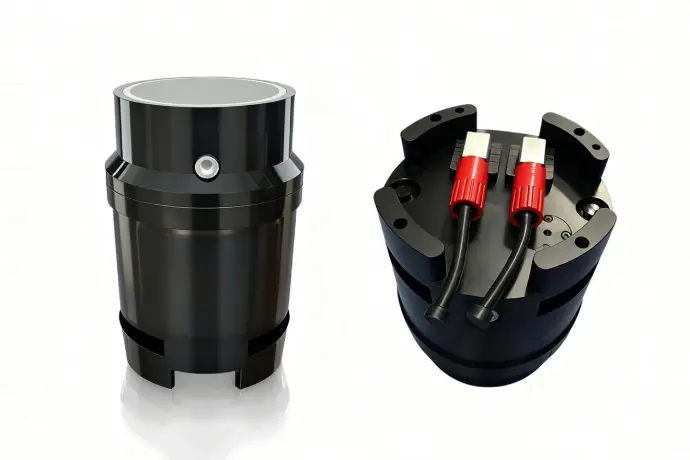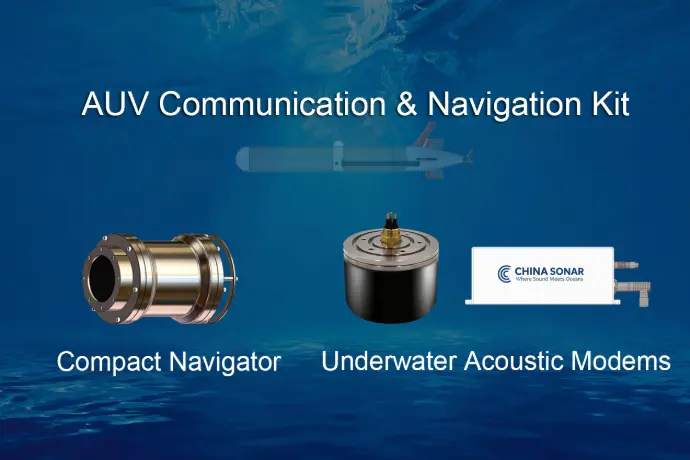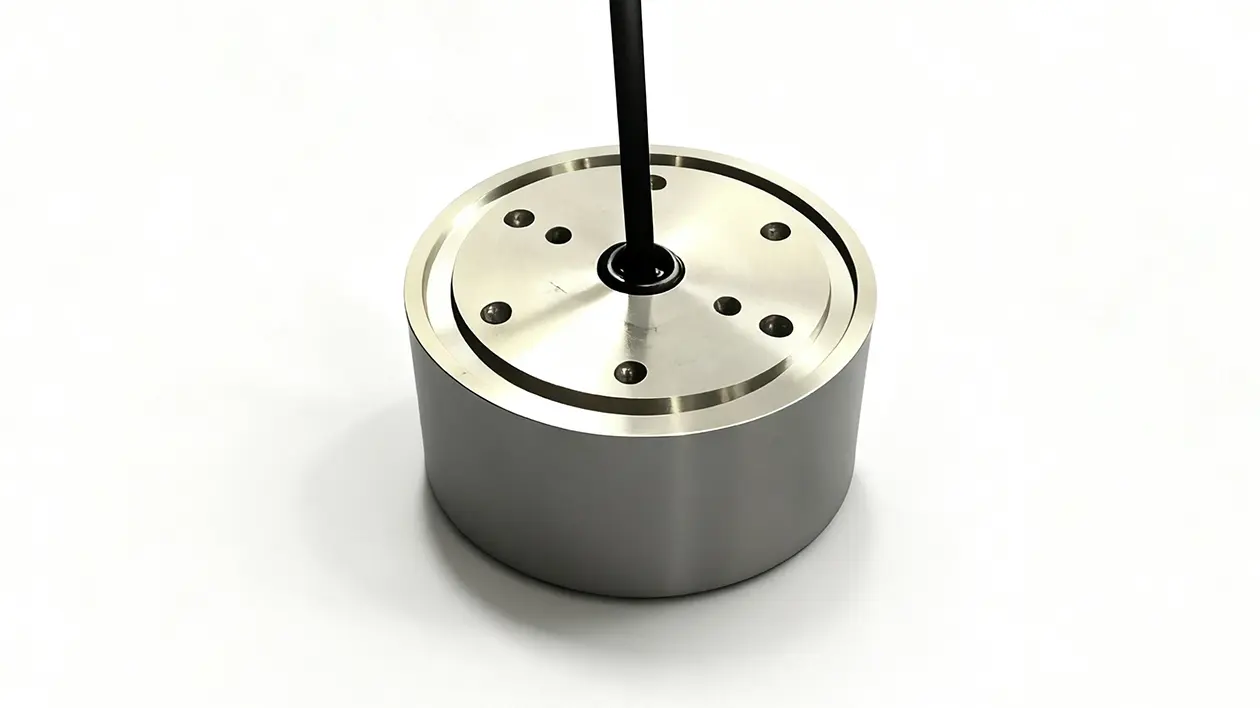
DVL-300K-Phased
Key Features
- Phased-array technology: Ensures accurate and stable velocity measurements.
- High bottom tracking performance: Reliable up to 200 m altitude with a velocity accuracy of ±0.3% ±1 mm/s.
- Extended water profiling range: 4.5–150 m with long-term accuracy ±0.2% ±2 mm/s.
- Rugged titanium housing: Lightweight (<9 kg in air) and corrosion-resistant for long-term deployments.
- Flexible integration: RS-422 communication and PD6 (ASCII) data format, compatible with INS and control systems.
- Versatile depth ratings: Standard 300 m, optional 3000 m and 6000 m for deep-sea applications.
Overview
System Composition
The DVL-300K-Phased Doppler Velocity Log consists of two main components: a phased-array transducer and an electronic chassis, featuring an integrated waterproof design.
- Phased-array transducer (waterproof): Responsible for transmitting and receiving acoustic signals, capturing velocity-sensitive Doppler shifts.
- Electronic chassis: Handles signal preprocessing, acoustic analysis, velocity calculation, and acoustic transmission functions.
This flexible design supports both separate configuration and fully integrated options, ensuring adaptability to different vehicle layouts and integration requirements.
Specifications
Applications
-
Autonomous Underwater Vehicles (AUVs)
The DVL-300K-Phased Doppler Velocity Log is well-suited for both compact and large-diameter AUVs, providing highly accurate bottom velocity and altitude measurements. This enables precise navigation, path planning, and control even in GPS-denied environments. -
Remotely Operated Vehicles (ROVs)
For inspection-class ROVs, the DVL-300K-Phased ensures reliable bottom tracking and altitude data, supporting stable maneuvering and positioning in near-bottom or confined subsea environments. -
Uncrewed Surface Vessels (USVs)
On surface platforms, the DVL-300K-Phased delivers dependable speed-over-ground measurement and drift compensation, maintaining navigation accuracy when GPS signals are unavailable, degraded, or intentionally denied.
Explore the DVL-Phased Series
The DVL-Phased Series includes the versatile 600 kHz model for mid-range missions and the long-range 300 kHz model for deep-sea operations. Whether for coastal trials, ocean monitoring, or deep-water engineering and system integration, the DVL-Phased Series delivers accurate, stable, and reliable underwater velocity and navigation performance powered by phased-array beamforming and advanced bottom-tracking capability.

AUV Communication & Navigation Kit
Compact Navigator & Underwater Acoustic Modem
Designed for Autonomous Underwater Vehicles (AUVs), the AUV Communication & Navigation Kit delivers high-precision navigation and reliable underwater communication in a unified solution.
- NAVS-3000 Compact Navigator — Provides INS-based positioning, DVL velocity measurements, and depth data for precise real-time navigation.
-
UAC-08160X-OEM Underwater Acoustic Modem — Ensures stable, long-range underwater communication across multiple frequency bands.
Principle of Phased-Array DVL
The Phased-Array Doppler Velocity Log (DVL) operates on the Doppler effect, measuring frequency shifts in acoustic signals reflected from the seabed or suspended particles in the water column. These Doppler shifts correspond directly to the platform’s velocity relative to the bottom.
Unlike conventional single-beam DVLs, the phased-array DVL employs multiple precisely controlled acoustic beams at a fixed frequency—such as 300 kHz in the DVL-300K-Phased—to deliver enhanced accuracy, stability, and reliability.
The phased-array transducer emits synchronized beams toward the seabed. As the AUV, ROV, or USV moves, the returning echoes experience frequency changes proportional to its motion. By analyzing these shifts across four beams, the system computes three-dimensional velocity components and altitude above the seabed, with automatic switching to water-column tracking when bottom lock is unavailable.
Key Advantages of Phased-Array DVLs
- Higher accuracy and resolution enabled by advanced beamforming.
- Compact, no moving parts design, ideal for integration on AUVs, ROVs, and USVs.
- Reliable bottom tracking across shallow and mid-depth waters.
- Seamless INS integration for robust underwater navigation and dead reckoning.
The DVL-300K-Phased exemplifies these benefits with a compact phased-array transducer and a titanium electronic chassis in a fully sealed design, ensuring durability in harsh marine environments. It provides precise three-dimensional velocity data, altitude measurements, and current profiling, making it an essential navigation sensor for unmanned platforms operating in GPS-denied environments.
